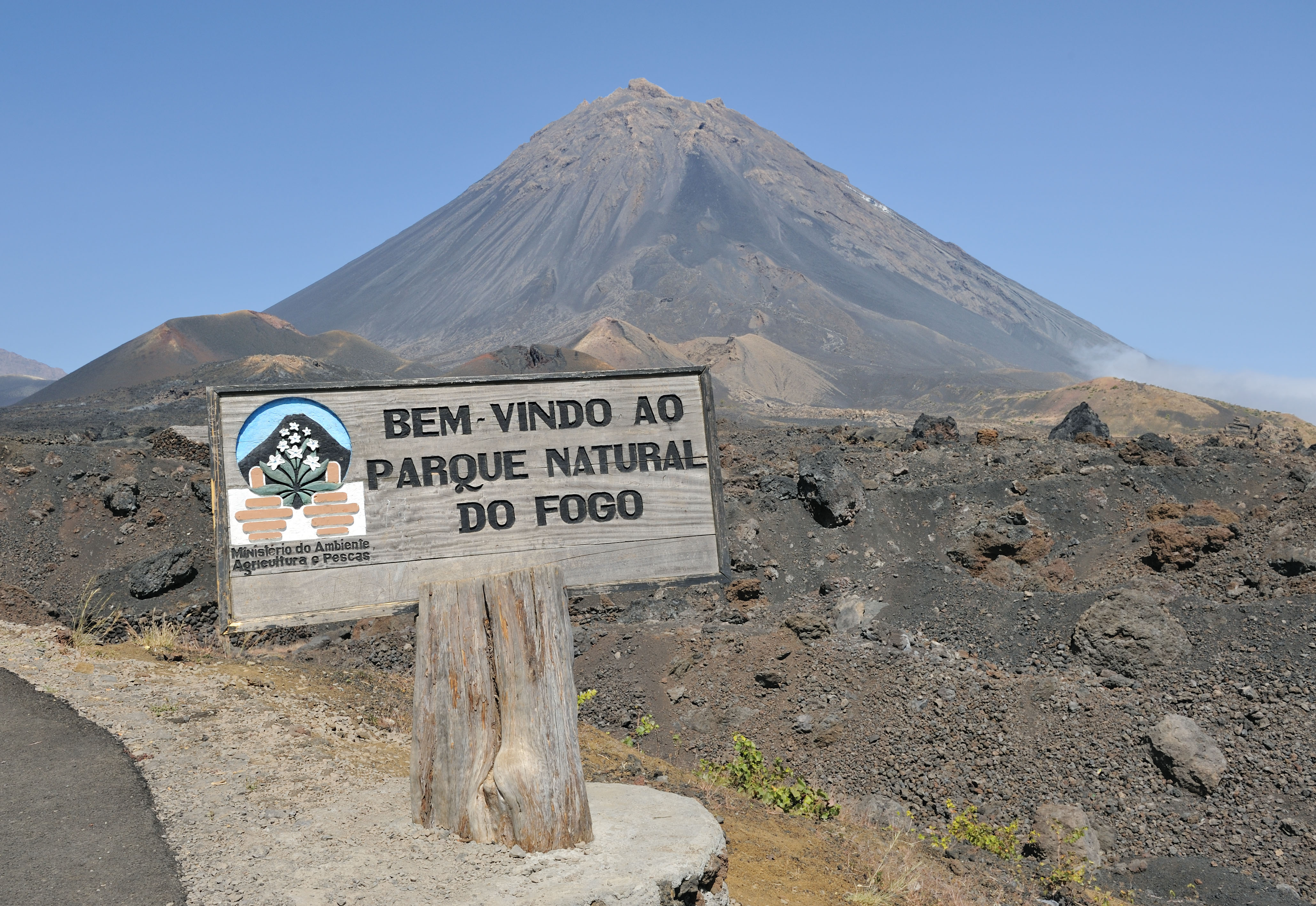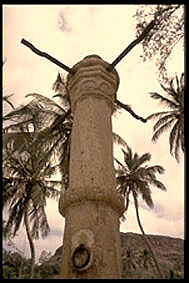|
Serra Do Pico De Antónia
The Serra do Pico de Antónia is a mountain range in the centre of the island of Santiago, Cape Verde, Santiago in the Cape Verde archipelago. It contains the Pico de Antónia, at the highest point of the island.Cabo Verde, Statistical Yearbook 2015 Instituto Nacional de Estatística (Cape Verde), Instituto Nacional de Estatística, p. 25 It is protected as a natural park,Resolução nº 36/2016 Estratégia e Plano Nacional de Negócios das Áreas Protegidas covering . [...More Info...] [...Related Items...] OR: [Wikipedia] [Google] [Baidu] |
Santiago, Cape Verde
Santiago (Portuguese language, Portuguese for “James, son of Zebedee, Saint James”) is the largest island of Cape Verde, its most important agricultural centre and home to half the nation's population. Part of the Sotavento Islands, it lies between the islands of Maio, Cape Verde, Maio ( to the east) and Fogo, Cape Verde, Fogo ( to the west). It was the first of the islands to be settled: the town of Ribeira Grande (now Cidade Velha and a UNESCO World Heritage Site) was founded in 1462. Santiago is home to the nation's capital city of Praia. History The eastern side of the nearby island of Fogo, Cape Verde, Fogo collapsed into the ocean 73,000 years ago, creating a tsunami high which struck Santiago. In 1460, António de Noli became the first to visit the island. Da Noli settled at ''Ribeira Grande'' (now Cidade Velha) with his family members and Portuguese from Algarve and Alentejo in 1462. [...More Info...] [...Related Items...] OR: [Wikipedia] [Google] [Baidu] |
Long-legged Buzzard
The long-legged buzzard (''Buteo rufinus'') is a bird of prey found widely in several parts of Eurasia and in North Africa. This species ranges from Southeastern Europe down to East Africa to the northern part of the Indian subcontinent. The long-legged buzzard is a member of the genus ''Buteo'', being one of the larger species therein. This species is simultaneously considered relatively powerful and aggressive for its taxonomic group as well as a relatively sluggish raptor overall.Ferguson-Lees, J., & Christie, D. A. (2001). ''Raptors of the World''. A&C Black. Like most buzzards, it prefers small mammals such as rodents, including Gerbillinae, gerbils, ground squirrels, voles and rats, also taking reptiles, birds and insects as well as carrion.Orta, J., P. F. D. Boesman, G. M. Kirwan, and J. S. Marks (2020). ''Long-legged Buzzard (Buteo rufinus)'', version 1.0. In Birds of the World (J. del Hoyo, A. Elliott, J. Sargatal, D. A. Christie, and E. de Juana, Editors). Cornell Lab of ... [...More Info...] [...Related Items...] OR: [Wikipedia] [Google] [Baidu] |
Protected Areas Of Cape Verde
This is a list of protected areas in Cape Verde:Resolução nº 36/2016 Estratégia e Plano Nacional de Negócios das Áreas Protegidas Áreas protegidas Cabo Verde 
[...More Info...] [...Related Items...] OR: [Wikipedia] [Google] [Baidu] |
Sonchus Daltonii
''Sonchus daltonii'' is a species of flowering plants of the family Asteraceae. The species is endemic to Cape Verde.Oromí, Martín, Zurita & Cabrera, 2005 : Lista preliminar de especies silvestres de Cabo Verde: Hongos, Plantas y Animales Terrestres.' Gobierno de Canarias, Consejería de Medio Ambiente y Ordenación Territorial, p. 41 It is listed as endangered by the IUCN. The genus was named by Philip Barker Webb in 1849. Its local name is ''coroa-de-rei'' ("king's crown"). Distribution and ecology ''Sonchus daltonii'' occurs on the Capeverdean islands of Santo Antão, São Vicente, São Nicolau, Santiago Santiago (, ; ), also known as Santiago de Chile (), is the capital and largest city of Chile and one of the largest cities in the Americas. It is located in the country's central valley and is the center of the Santiago Metropolitan Regi ... and Fogo. It grows in humid and sub-humid zones, mainly between 800 and 1,800 metres elevation. It is used for graz ... [...More Info...] [...Related Items...] OR: [Wikipedia] [Google] [Baidu] |
Campanula Jacobaea
''Campanula jacobaea'' is a species of flowering plants of the Campanulaceae family. The species is endemic to Cape Verde and is listed as vulnerable by the IUCN. Its local name is ''contra-bruxas-azul'' ("blue against witches"). The plant is used in traditional medicine. ''Campanula jacobaea'' is shown on a Cape Verdean $5 escudo coin issued in 1994. Distribution and ecology ''Campanula jacobaea'' are founded in the islands of Santo Antão, São Vicente, São Nicolau and Santiago Santiago (, ; ), also known as Santiago de Chile (), is the capital and largest city of Chile and one of the largest cities in the Americas. It is located in the country's central valley and is the center of the Santiago Metropolitan Regi .... The main altitudinal distribution is between 600 m and 1000 m. The plant is a mesophytic species, found in humid and sub-humid areas. References {{Taxonbar, from=Q2935462 jacobaea Endemic flora of Cape Verde Flora of Santo Antão, Cape Verde ... [...More Info...] [...Related Items...] OR: [Wikipedia] [Google] [Baidu] |
Euphorbia Tuckeyana
''Euphorbia tuckeyana'' is a species of flowering plants of the family Euphorbiaceae. The species is endemic to Cape Verde.Oromí, Martín, Zurita & Cabrera, 2005 : Lista preliminar de especies silvestres de Cabo Verde: Hongos, Plantas y Animales Terrestres.' Gobierno de Canarias, Consejería de Medio Ambiente y Ordenación Territorial, p. 44 The species is named after James Hingston Tuckey. Its local name is ''tortolho''. The plants are used for tanning hides. As most other succulent members of the genus ''Euphorbia'', its trade is regulated under Appendix II of CITES CITES (shorter acronym for the Convention on International Trade in Endangered Species of Wild Fauna and Flora, also known as the Washington Convention) is a multilateral treaty to protect endangered plants and animals from the threats of inte .... Description ''Euphorbia tuckeyana'' is a shrub that can reach 3 m height. It has milky sap. Its elliptical leaves are placed in rosettes. It has yellow ... [...More Info...] [...Related Items...] OR: [Wikipedia] [Google] [Baidu] |
Hemidactylus Brookii
''Hemidactylus brookii'', also known commonly as Brooke's house gecko and the spotted house gecko, is a widespread species of lizard in the family Gekkonidae. Etymology The specific name, ''brookii'', is in honor of British adventurer James Brooke. Description Snout somewhat longer than the distance between the eye and the ear-opening, nearly twice the diameter of the orbit; forehead concave; ear-opening small, oval, vertical, about one third the diameter of the eye; on the occiput very small round tubercles. Rostral quadrangular, with a median cleft; nostril bordered by the rostral, the first upper labial and three nasals, the upper not in contact with its fellow. Eight to ten upper and seven to nine lower labials; mental large, triangular; two or three pair of chin-shields, median forming - a suture. Scales of the throat granular. Body covered with small granules, intermixed with large keeled trihedral tubercles, arranged in 16-20 longitudinal series, the keels of the outer on ... [...More Info...] [...Related Items...] OR: [Wikipedia] [Google] [Baidu] |
Tarentola Rudis
''Tarentola rudis'' is a species of geckos in the family Phyllodactylidae. The species is endemic to Cape Verde, where it occurs in the southern part of the island of Santiago and on the Ilhéu de Santa Maria. The species was described as a variety of '' Tarentola delalandii'' by George Albert Boulenger in 1906 based on several specimens collected by Leonardo Fea Leonardo Fea (Turin 24 July 1852 – Turin 27 April 1903) was an Italian explorer, zoologist, painter, and naturalist. Biography Fea was born in Turin, a son of Paolo Fea, who was professor of painting at Accademia Albertina, and Anna Roda. In .... Taxonomy The following former subspecies were elevated to species status in 2012:Vasconcelos, Perera, Geniez, Harris & Carranza, An integrative taxonomic revision of the Tarentola geckos (Squamata, Phyllodactylidae) of the Cape Verde Islands.' Zoological Journal of the Linnean Society, 2012, vol. 164, no. 2, p. 328-360 *''Tarentola rudis boavistensis'': '' Tarentola boa ... [...More Info...] [...Related Items...] OR: [Wikipedia] [Google] [Baidu] |
Tarentola Darwini
Darwin's wall gecko (''Tarentola darwini'') is a species of lizard in the family Phyllodactylidae. The species is endemic to Cape Verde, where it occurs on the islands of São Nicolau, Sal, Santiago, and Fogo. Taxonomy and etymology ''T. darwini'' was described and named by German herpetologist Ulrich Joger in 1984. The specific name ''darwini'' refers to English naturalist Charles Darwin, who visited the island of Santiago in 1832. Beolens, Bo; Watkins, Michael; Grayson, Michael (2011). ''The Eponym Dictionary of Reptiles''. Baltimore: Johns Hopkins University Press. xiii + 296 pp. . (''Tarentola darwini'', p. 65). Habitat The preferred natural habitat of ''T. darwini'' is arid, rocky areas at low altitudes. Description Adults of ''T. darwini'' usually have a snout-to-vent length (SVL) of about . The maximum recorded SVL is . Reproduction ''T. darwini'' is oviparous Oviparous animals are animals that reproduce by depositing fertilized zygotes outside the body (i.e., ... [...More Info...] [...Related Items...] OR: [Wikipedia] [Google] [Baidu] |
Chioninia Stangeri
''Chioninia stangeri'' (English common name: Stanger's skink) is a species of lizard in the family Scincidae. The species is endemic to the Cape Verde Islands. Geographic range ''C. stangeri'' is found on the islands of São Vicente, Santa Luzia, Ilhéu Branco, and Ilhéu Raso. Habitat The preferred natural habitat of ''C. stangeri'' is shrubland. Reproduction ''C. stangeri'' is viviparous. Etymology The specific name Specific name may refer to: * in Database management systems, a system-assigned name that is unique within a particular database In taxonomy, either of these two meanings, each with its own set of rules: * Specific name (botany), the two-part (bino ..., ''stangeri'', is in honor of English explorer William Stanger. xiii + 296 pp. . (''Chioninia stangeri'', p. 251). References Further reading * Boulenger GA (1887). ''Catalogue of the Lizards in the British Museum (Natural History). Second Edition. Volume III. ... Scincidæ ...'' London: Trustees of the Br ... [...More Info...] [...Related Items...] OR: [Wikipedia] [Google] [Baidu] |
Lizard
Lizard is the common name used for all Squamata, squamate reptiles other than snakes (and to a lesser extent amphisbaenians), encompassing over 7,000 species, ranging across all continents except Antarctica, as well as most Island#Oceanic islands, oceanic Archipelago, island chains. The grouping is Paraphyly, paraphyletic as some lizards are more closely related to snakes than they are to other lizards. Lizards range in size from chameleons and geckos a few centimeters long to the 3-meter-long Komodo dragon. Most lizards are quadrupedal, running with a strong side-to-side motion. Some lineages (known as "legless lizards") have secondarily lost their legs, and have long snake-like bodies. Some lizards, such as the forest-dwelling ''Draco (genus), Draco'', are able to glide. They are often Territory (animal), territorial, the males fighting off other males and signalling, often with bright colours, to attract mates and to intimidate rivals. Lizards are mainly carnivorous, often b ... [...More Info...] [...Related Items...] OR: [Wikipedia] [Google] [Baidu] |
Endemism
Endemism is the state of a species being found only in a single defined geographic location, such as an island, state, nation, country or other defined zone; organisms that are indigenous to a place are not endemic to it if they are also found elsewhere. For example, the Cape sugarbird is found exclusively in southwestern South Africa and is therefore said to be ''endemic'' to that particular part of the world. An endemic species can also be referred to as an ''endemism'' or, in scientific literature, as an ''endemite''. Similarly, many species found in the Western ghats of India are examples of endemism. Endemism is an important concept in conservation biology for measuring biodiversity in a particular place and evaluating the risk of extinction for species. Endemism is also of interest in evolutionary biology, because it provides clues about how changes in the environment cause species to undergo range shifts (potentially expanding their range into a larger area or b ... [...More Info...] [...Related Items...] OR: [Wikipedia] [Google] [Baidu] |



